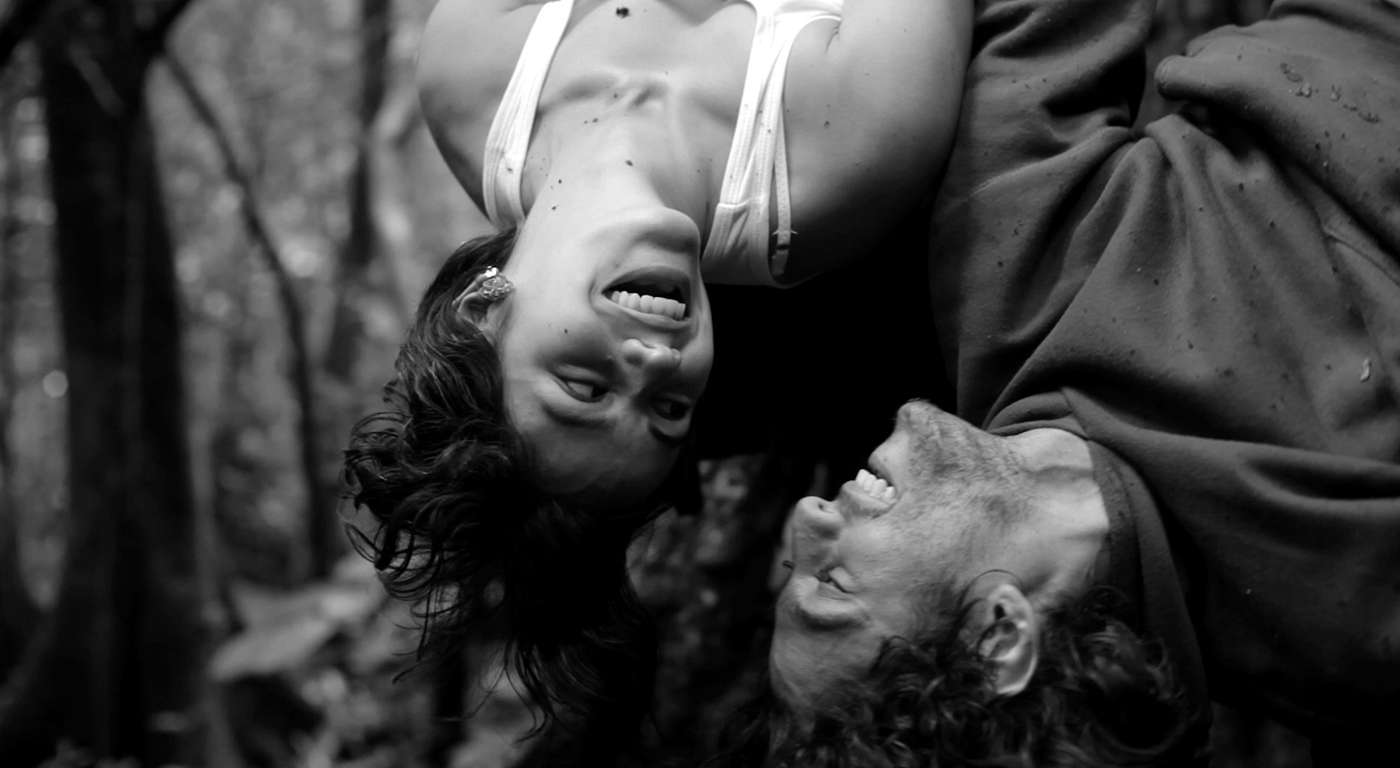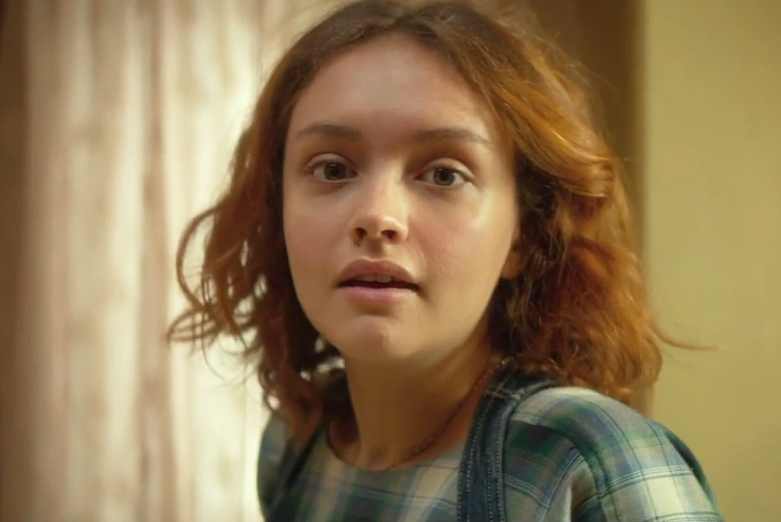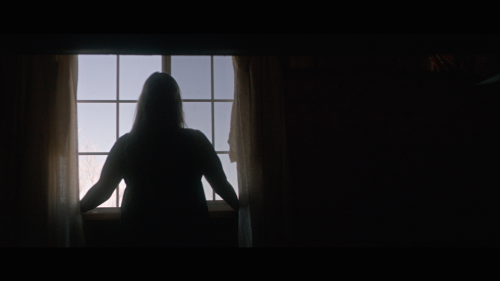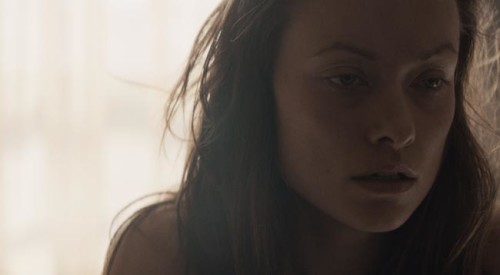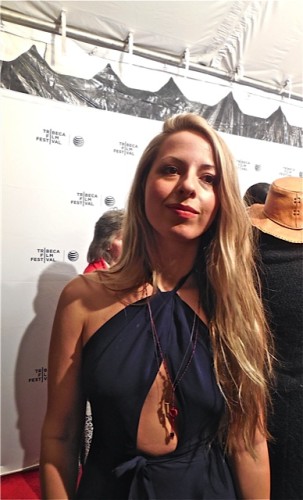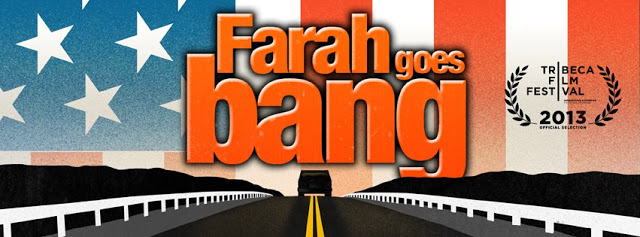This is a guest post by Paula Schwartz.
Rock legend Patti Smith and Oscar-nominated actor Ethan Hawke shared stories and ideas about process, acting and writing Thursday afternoon at the SVA Theater in Chelsea to kick off the Tribeca Film Festival talk series.
Here are things I learned about the rocker/poet, who is a fascinating raconteur who had a packed audience spellbound:
How she came to co-write “Cowboy Mouth,” a one-act play with music with Sam Shepard:
Sam and I wrote this play cause we had this relationship which we shouldn’t have because he had a small kid, a family. We were young, and we knew we had to end our relationship even though we liked each other so much, (so) we wrote this play sort of as our swan song… (He said) let’s stop crying and write a play.
I said, ‘I don’t’ know how to write a play.’ Sam said, ‘You’re the girl and I’m the guy… Just do what I say…He writes a little set up and then he says something and he hands me the typewriter so I just answered him, and we wrote out a whole play that way and then he thought we should perform it… Sam at the time was sort of like a big deal, so we got to do the play at American Place Theater and there was a part in the play where Sam wanted us to have a battle of language…We battled with language.
How Smith learned to improvise:
Sam improvises his language, and my character is suppose to improvise back, and I said, ‘How do we do that? What will I say?’ … He said, I’ll say stuff and you’ll say stuff back to me, any kind of rhythm and poetry… ‘What if I make a mistake?’ He said, ‘It’s improvising! You can’t make a mistake. If you lose a beat then you invent another beat,’ and that made perfect sense to me. And that little instruction and then doing a play with him I learned how to improvise, which has served me my whole life in everything I do. It was one of the greatest lessons I ever got was from Sam.”
Smith likes getting awards:
It’s really fun to get like accolades. I’ve gotten awards from the French government. I love my medals, and I do I really I get in the swing of it. Somebody wants to give me a medal, I’m really happy. But really the only real success is that success that you know when you’ve done something well, when you finish a poem or you do a certain performance and you know you’ve done a good job.
Gregory Corso and Smith’s first poetry reading:
Of the beat poets, Gregory Corso was the youngest… Gregory had intense energy and he was also very academic as well as being one of our greatest poets… We would go to poetry readings. I was only 20 years old. They don’t have poetry readings in South Jersey… A lot of these poets go on and on… I have to say it was kind of boring… I just sat there quietly… Gregory goes, ‘Shit, shit, shit… No blood, get a transfusion.’…and I was like, ‘If I ever do a poetry reading it can’t be boring, Gregory will cream me.
So I did my first poetry reading in St. Marks in 1972. I was talking to Sam Shepard, and I was telling him I’ve got to deliver. I have to do something that will transcend boredom and Sam said, ‘Play a guitar because a lot of your poems have a lot of rhythm.’ I asked my friend Lenny Kaye, and I asked him if he could play like car crash sounds or feedback and things to the poem and stuff like that, and he did and it caused quite a ruckus and Gregory wasn’t bored.
Smith’s work habit rituals:
I write in the morning usually for a few hours, since I was about 10, almost every day. If I don’t write I feel agitated. I’ll write in a bathroom or a train. I just feel the need always to write something. When I was younger I would stay up all night or smoke a little pot and write… I would sit all day typing on the typewriter but once I had children, once I had children, a baby, I couldn’t do that, I had to redesign and redefine my work time and so I started waking up at 5 in the morning – this was in like 1981 — and from 5 to 8 when my husband and baby were sleeping that was my time to write. That’s when actually really developed a certain work ethic.
How Smith went from being a poet to a performer:
I started out writing poetry, which is a very solitary discipline, drawing, painting also, and I never wanted to be a performer really, but through writing poetry and performing it I evolved into being a performer and then having a rock and roll band but it was not a planned thing. It was nothing I aspired to so it was evolving right in front of me but it was evolving and the people were part of the fabric of that evolution. I would never have done that by myself because I was a solitary worker… I think that’s the one thing that makes me a little different from other musicans, other performers or other rock and roll singers. I’m really of and from the people as a performer. I feel we’re all part of the same fabric I just never would have done it. I wouldn’t have found it on my own. I didn’t even aspire to it.
Paula Schwartz is a veteran journalist who worked at the New York Times for three decades. For five years she was the Baguette for the New York Times movie awards blog Carpetbaggers. Before that she worked on the New York Times night life column, Boldface, where she covered the celebrity beat. She endured a poke in the ribs by Elijah Wood’s publicist, was ejected from a party by Michael Douglas’s flak after he didn’t appreciate what she wrote, and endured numerous other indignities to get a story. More happily she interviewed major actors and directors–all of whom were good company and extremely kind–including Brad Pitt, Angelina Jolie, Morgan Freeman, Clint Eastwood, Christopher Plummer, Dustin Hoffman and the hammy pooch “Uggie” from The Artist. Her idea of heaven is watching at least three movies in a row with an appreciative audience that’s not texting. Her work has appeared in Moviemaker, more.com, showbiz411 and reelifewithjane.com.
